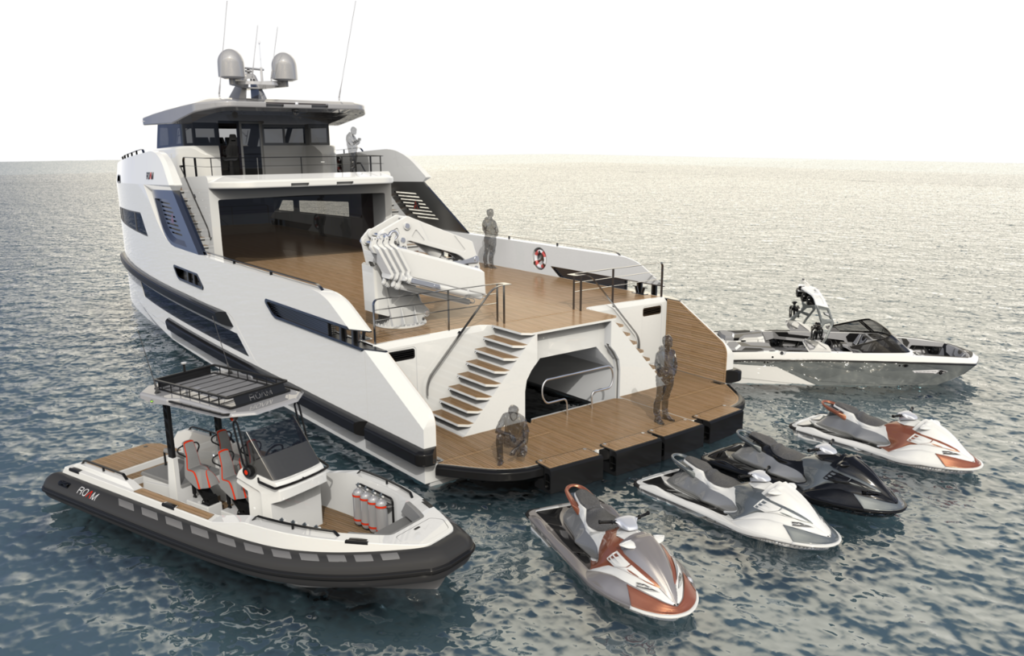
Get ready to learn about the greatest boats for Superyachts!
What’s a tender, you ask? It’s a boat that helps service a larger vessel (aka the mothership). Tenders came in all sorts of shapes and sizes, offering a plethora of conveniences.
Back in the day, they were called “ship’s boats,” and have supported bigger vessels for centuries. Whether it’s for guest transfers, shelter boats, landing crafts, or stowed on deck or towed astern, not much has changed!
Although smaller yachts usually rely on rigid inflatable boats, modern-day superyachts require a range of vessels that are indispensable.
We’ve been building boat tenders for over ten years, yet categorizing them remains a challenge due to so many custom requests. Despite this, we’ve categorized them into one of the following hull types: fully inflatable, rigid inflatable, and rigid.
Are you curious about open tenders? They’re guest transfer boats, usually one-deck, with no enclosed cabin. They make for great day boats with seating both forward and aft. Nonetheless, they can also integrate center console boats, some dive boats, landing crafts, limousines, and more.
Now you may be wondering what a chase tender is. It’s a tender that follows the mothership around- hence the name. Since size is the main attribute for chase boats, they can take on many forms and are generally not stored on board, but instead towed astern. These boats have excellent seaworthiness and can withstand the rigors of being towed. While many large chase tenders can be operated entirely independently, towing very long distances (such as transatlantic) is not recommended. That’s where a full-blown support vessel comes in handy.
Last but not least- what’s a classic tender? These babies come with an exquisite, continuous line, making them incredibly stylish!
What exactly is a foiling tender?
By combining both lift and thrust (much like an airplane), high-speed tenders now have the potential to become airborne.
Increased speed, better fuel consumption, and a smoother ride on rough waters are just some of the benefits – not to mention that the impressive elevation of the tender above towering swells presents a truly remarkable experience for guests.
So what defines a catamaran tender?
While the catamaran tender is often associated with utility boats, it’s worth noting that these twin-hulled vessels offer several distinct advantages over their mono-hull counterparts.
Boasting a significant increase in size, the wider catamaran can provide greater stability and comfort while still achieving faster speeds and greater efficiency.
And finally, what exactly is a dive tender?
Primarily designed for scuba diving, a range of vessels from amphibious boats to landing crafts and open tenders can also work perfectly well for a diving experience.
A versatile dive boat features ample storage, floor space, and convenient access to the water for divers of all levels.

